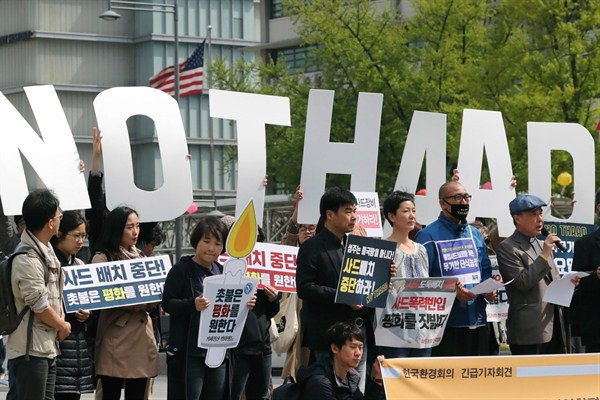During South Korea’s presidential election, Moon Jae-in—who emerged as the winner on Tuesday—criticized the deployment of an advanced U.S. missile defense system known as THAAD, saying it had been rushed. China has also made clear its objections to the system, even deploying children as young as 7 in a series of anti-THAAD boycotts and rallies. In an email interview, Joshua Pollack, editor of the Nonproliferation Review and senior research associate at the James Martin Center for Nonproliferation Studies, explains what THAAD does and why it is controversial.
WPR: What are THAAD missile defense systems designed to defend against, and why is that particularly relevant in the context of North Korea’s missile capabilities?
Joshua Pollack: THAAD stands for “terminal high-altitude area defense,” a name that helpfully distinguishes it from other ballistic-missile defense (BMD) systems. Like the shorter-range Patriot systems, THAAD intercepts missiles in the “terminal” phase of their trajectories, while they are descending toward their targets. But THAAD can perform intercepts at a higher altitude than Patriot can, at the top of the atmosphere or even above it. This high-altitude intercept capability allows THAAD to protect an area of roughly 200 kilometers, or 125 miles, in radius from attacks with short-range ballistic missiles (SRBMs) like Scuds or medium-range ballistic missiles (MRBMs) like North Korea’s Nodong or Polaris missiles. The current generation of Patriot BMD systems is meant to stop the same sorts of missiles, but a Patriot battery can only protect a single facility at a time.

